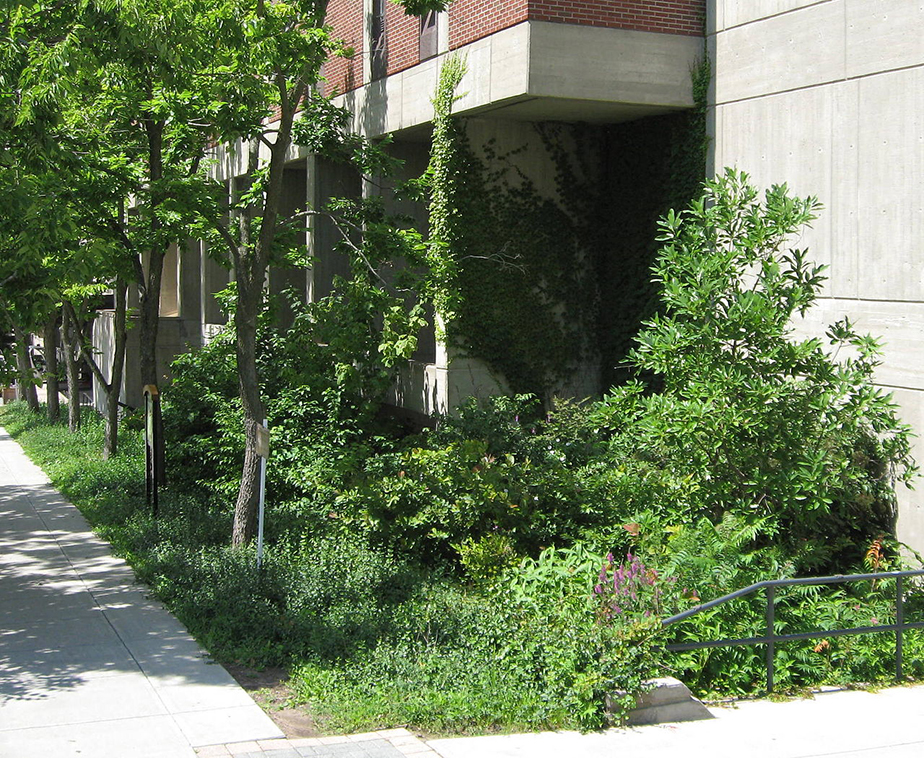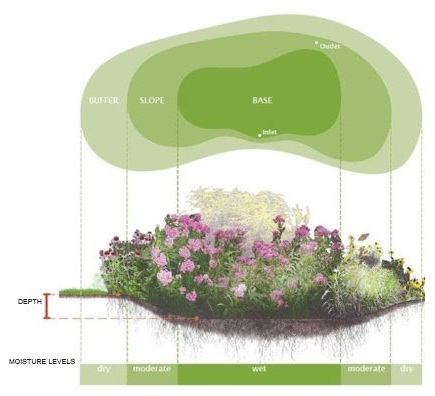Earthwatch Institute®: How to Build a Rain Garden
Earthwatch Institute® outlines the steps needed to build a tool to manage water on your property or in your neighborhood, clean water before it re-enters the natural system, and provide a home for pollinators.
Rain gardens are a type of green infrastructure, an approach to water management that mimics the natural water cycle. Rain gardens seem relatively simple—just a shallow basin that captures stormwater runoff. Within the garden vegetation and layers of different mulch and soils imitate the ecological functions of a natural landscape. But properly installing a rain garden can be challenging, so Earthwatch Institute® has created a guide to walk you through the process.
Earthwatch has been building, studying, and educating others about rain gardens as a part of our sustainable cities programs. In 2019 we worked with the Franklin Park Zoo in Boston to build two rain gardens that can be viewed and visited by zoo patrons, and we’ve continued to work with communities to educate community members on the importance and benefits of rain gardens through our RAIN (Raingarden Action in Neighborhoods) program.
Depending on the size, constructing a rain garden can be done in a weekend with the help of family or friends. We'll walk you through the steps to construct a rain garden in your own back-yard.
.
1. Find the right place to put it
You should place your rain garden where the water puddles. During the next storm, pay attention to where water is flowing and collecting in your yard. As you’re figuring out where your rain garden will go, note that you’ll want to construct it at least 5 feet away from any buildings to avoid water damage.
.

Courtesy of: https://en.wikipedia.org/wiki/Rain_garden
.
.
2. Decide the size of your garden and then dig.
The typical residential rain garden is between 50 and 100 square feet. You can figure out which size will work best on your property by using handy tools such as this sizing map, provided by the University of Connecticut.
- Typically, you should dig down 6 to 12 inches.
- Create a basin that will capture stormwater. Be sure to create a clear location where runoff water can enter and exit the garden.
- Add rocks or riprap to the entrance of the rain garden to keep the water from flowing into your garden too fast.
- Start to map out where you will plant your plants.

Courtesy of http://sewersofwilmette.com/rain-gardens/
.
.
3. Determine the right soil and plants.
 Choose your soil and plants carefully, so your rain garden functions properly.
Choose your soil and plants carefully, so your rain garden functions properly.
Plants will help absorb water and many pollutants that are washed into the garden by stormwater. The soil mix will also help filter the pollutants.You should choose a permeable soil, which typically has increased amounts of sand.
As for the plants, you should pick plants that are tolerant of periods of lots of water and dry periods. It is also smart to consider local species. New England aster, butterfly weed, iris, cardinal flower, bleeding heart, columbines, and hosta are good species to consider. You can also get more suggestions from your local gardening store.
This is an opportunity to be creative and create something that is both beautiful and that also helps capture and filter water.
.
.
4. Monitor and maintain it.
Your newly planted plants may need water and attention in the first few months of your rain garden. You will want to keep an eye on them and make sure they can thrive on their own. It’s also a good idea to check that weeds have not taken over the space.
Periodically check to make sure the inlet to your garden is clear so the rainwater can freely flowing. You may have to clear away leaves, branches, or other debris.

Courtesy of Washington State University.
.
.
To learn more, check out Earthwatch Institute's RAIN webpage for more information and upcoming events
.
.
Amazon Associates disclosure: Earthwatch may earn a small commission from qualifying purchases made through links in this post.
.
Sign up for the Earthwatch Newsletter
Be the first to know about new expeditions, stories from the field, and exciting Earthwatch news.